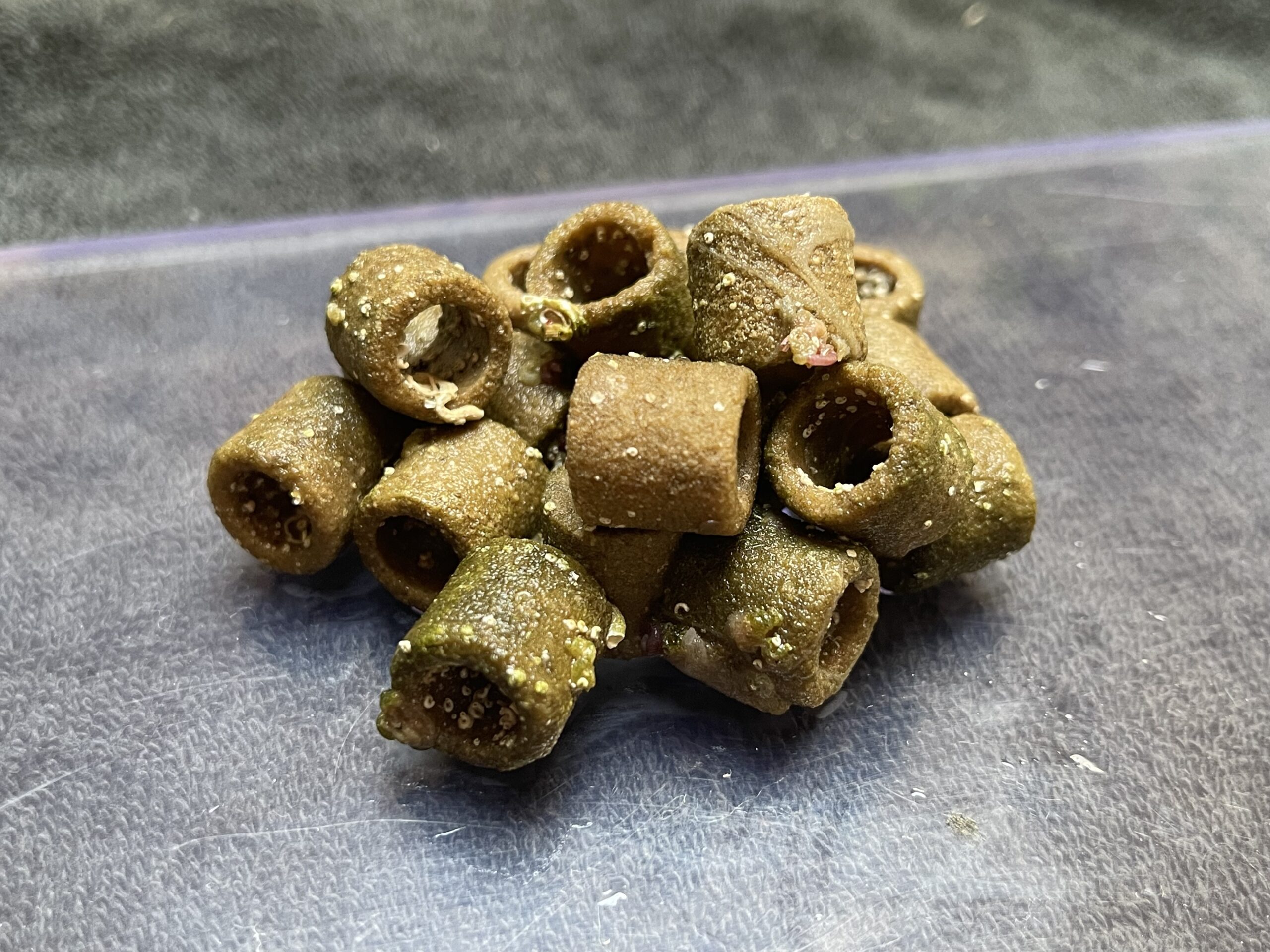Cycling, and dealing with Diatoms, Dinoflagellates, and Cyanobacteria are the biggest setbacks for the new reefkeeper but they can be avoided. Bottled bacteria have their place and live rock and live sand their pros and cons, but the quickest, easiest, most trouble-free way to introduce the right type of microbial life to a new tank is to move over some mature bio media. I’ve been doing it for years, the bio media is the one thing I move from tank to tank and I never, ever, go through the ugly phase. It’s easy!
Types of filter media
My bio media of choice over the past few years have been Siporax and Maxspect Nano-Tech Bio-Spheres, although any ceramic media will do. The key is to take it from a tank that’s been running a long time, like two years, and ideally from a mixed reef with a range of corals. To do this from scratch I’ll find a reefer with just such a tank, and media in their sump, then I’ll buy a box of brand-new media and swap a like-for-like amount with my fellow reefer. I am not taking all of their mature stuff, of course.
I’ve also done this with my friendly LFS too, paying for a box of media there and then, and then swapping some out for very mature media that are lying in their display tanks or coral trays. I know firsthand that two of my LFS’s coral trays are over ten years old, they don’t UVs, and they’ve been home to thousands of corals from all over the world, each contributing their own bit of microbial goodness to the system. They’re full of tiny critters too.

The media, rock, and sand from those tanks are reefer’s gold, the corals and difficult fish do really well in there, and there’s no nuisance algae. I use as little as one liter of mature bio media to instantly cycle tanks up to 500 litres and so far the results have been 100% successful. Like a baker’s yeast culture, my mature bio media is my reef genesis and I spread it to every tank I set up. Give it a try!
If I’m setting up a new tank for someone, if I know months in advance I’ll get them to buy new media and then I’ll place it into the sumps of my LFS for exactly the same reasons. If I can take multiple media samples from multiple tanks, so much the better, and a scoop of sand and a few chunks of rock from someone’s tank is the icing on the cake. It’s instant maturity.
Option 2, live corals
Jake Adams never used ceramic media in his reef systems, however, although he could achieve insta-tank cycling too, only this time with live corals. If your water is of the right salinity and temperature, light, and flow, then instead of adding a pair of hardy clownfish, and some bacteria and waiting, try filling the tank with as many corals as you can first. Just like the bio media, those coral bases and ceramic frag plugs have also become mini reefs of life and they transfer all the good bacteria from the ocean or a mature tank to the new tank, making the transition from sterile to mature much more seamless.

If you don’t have corals to move from another tank or a mature media option then head to your LFS and search out any corals that are growing on rock. This could be leather corals, zoa rock, or corals returned from tank breakdowns. In terms of microbial diversity, a dipped, fragged Acropora will probably score low, whereas a freshly imported Vietnamese Zoa rock will score highly. I’ve matured tanks seamlessly from day one just by adding leather corals and zoa rocks, with no ammonia, nitrite, or nuisance algae to follow. Macroalgae carry bacteria on their surfaces too, so the more life you can add to a new tank, the better.
Nuisance algae and the ugly phase can be avoided. Like freshwater tank cycling, transferring mature filter media from another tank is the most certain way to add the right type of bacteria from day one. And if you’re a retailer, consider selling pre-matured bio media. It will pay dividends for you and your customers in the long term.



